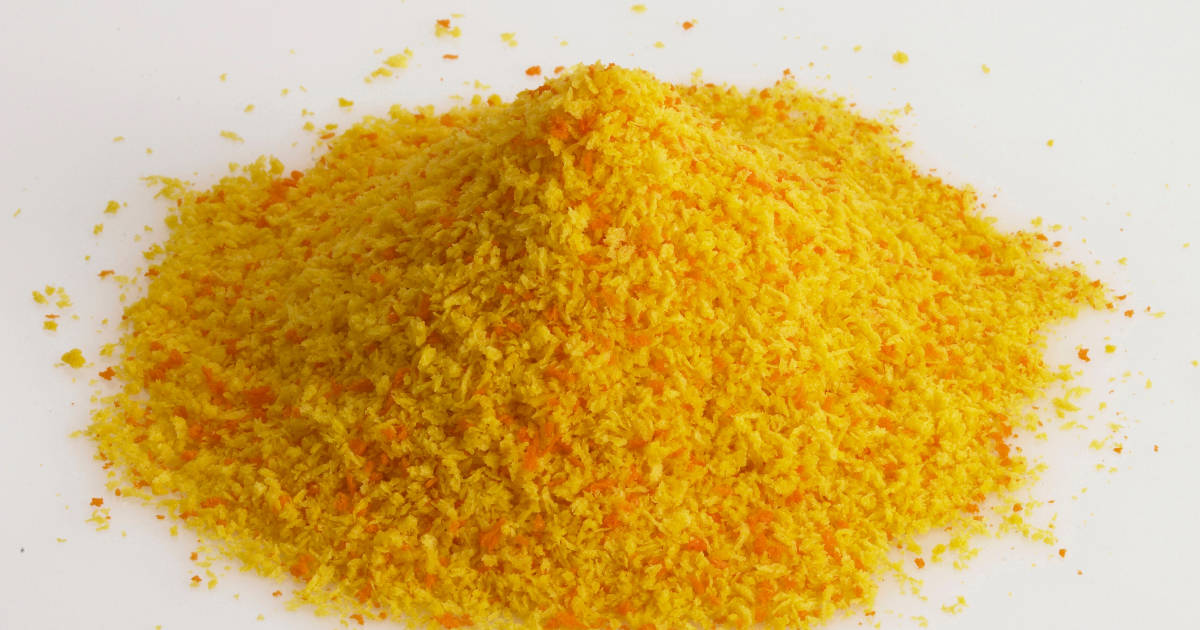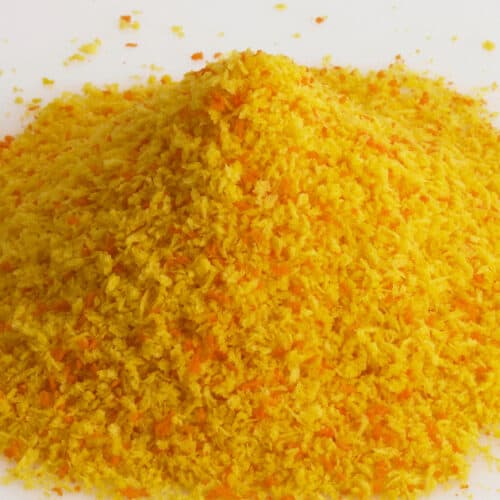Cheddar powder is a versatile ingredient that adds a delicious cheesy flavor to snacks, pastas, soups, and more.

Making your own cheddar powder at home is easy with just a few simple ingredients and tools.
Choosing the Best Cheese for Powder
The first step in making great tasting cheddar powder is selecting the right cheese to start with. Since the flavor of cheese tends to mellow when heated, it's best not to use a very mild cheddar.
Extra sharp cheddar works wonderfully, as it will still have nice strong flavor once dehydrated and powdered. Other good options include aged cheddar, sharp cheddar, or any favorite hard cheese that you enjoy.
Preparing the Cheese
Preparing cheddar or any hard cheese for dehydrating into powder is simple. You can grate, dice into small cubes, or even purchase preshredded cheese. Preshredded cheese works beautifully for making powders since the smaller pieces mean faster, more even drying. Just be aware that pre-shredded cheese contains anti-caking agents. If you want to avoid additives, shred a block of your favorite cheese yourself.
Key Takeaway: Preshredded cheese is the easiest option for dehydrating into powder, but does contain anti-caking agents. Block cheese has no additives if you want to shred it yourself before dehydrating.
Dehydrating Parameters
With your cheese prepped, it's time to load up your dehydrator trays. Here are some key things to keep in mind:
- Temperature: You'll want to dehydrate cheese at the lowest possible setting, between 95°F to 115°F maximum. This prevents melting or cooking the cheese.
- Airflow: Allow space between pieces of cheese for air circulation and even drying. Overcrowding will increase drying time.
- Absorbent Material: Line trays with absorbent towels or paper towels. Cheese releases fat and moisture when drying and absorbent material helps soak it up.
Key Takeaway: Dehydrate cheese between 95°F and 115°F to prevent melting. Allow good airflow between pieces and line trays with absorbent material.
Checking for Doneness
Depending on factors like cheese shred size and dehydrator efficiency, drying time can vary quite a bit. Check cheese periodically until completely dehydrated. Signs your cheddar powder is done:
- Brittle and snaps apart instead of bending
- Makes a sharp "clinking" sound when dropped
- Uniform dull, chalky appearance throughout
If cheese still bends or seems moist in spots, continue dehydrating until fully dried. Expect anywhere from 8 to 12 hours or possibly longer.
Turning Cheese into Powder
Once cheddar is fully dehydrated, you need to grind it into powder. Let cheese come completely to room temperature before powdering to avoid moisture condensation issues. Use a dedicated coffee grinder or blender on pulse setting to turn dried cheese into fine powder. Avoid over-blending or friction heat can be a problem. Work in small batches for best results.
Key Takeaway: Let dehydrated cheese come to room temp before powdering. Use short blender pulses to create fine powder and avoid heating cheese.
Storing Homemade Powders
Properly stored, homemade cheddar powder lasts up to a year. To maximize shelf life, transfer freshly made powder into airtight jars or bags. Suck out excess air and seal using a vacuum sealer if possible. Store containers in a cool, dark place like the pantry. Without vacuum sealing, cheese powder keeps only a couple weeks. Refrigeration isn't necessary but does help maintain quality longer.
And that's all there is to making your own cheddar powder at home! Now let's go over some delicious ways to use this versatile ingredient.
Using Homemade Cheddar Powder
One of the best things about homemade cheese powders is that their uses are almost endless! Here are just a few tasty ways to enjoy your cheddar powder creation:
Cheesy Popcorn Topping
Drizzle hot popped popcorn with melted butter. Sprinkle on a couple tablespoons of cheddar powder per batch and toss to distribute. The residual heat helps the powder adhere and infuses popcorn with cheesy flavor. Customize your cheese popcorn by using different cheese powders like parmesan, romano, or gouda!
Mix into Breads and Snacks
Stir your cheese powder into bread or pizza dough for cheesy bakes. Fold some into biscuit or scone batter too. You can also rim glasses for margaritas or bloody mary's with cheese powder for an instant flavor boost.
Sauce and Soup Base
Whisk cheese powder into sauces, gravies, and soups to amp up flavor without altering texture. It nicely enhances dishes like mac and cheese, cauliflower cheese soup, nacho cheese sauce, and more without dilution.
Nacho Cheese Dip
For quick nacho dip, combine cheese powder with Greek yogurt or sour cream. Add desired seasonings like chili powder, cumin, cayenne and serve with crunchy tortilla chips! Customize flavor profiles by using different cheese powders.
As you can see, the possibilities are endless with homemade cheddar powder! It keeps well so make big batches to have on hand whenever that cheesy craving strikes.

Homemade Cheddar Powder Recipe
Ingredients
- 8 oz extra sharp cheddar cheese, shredded or diced finely
- Paper towels or reusable mesh dehydrator sheets
Instructions
- Prepare cheese by shredding block cheese or dicing into small cubes. You can also use store bought shredded cheese.
- Line dehydrator trays with paper towels or mesh sheets. Evenly spread cheese out in a thin layer, allowing space between pieces.
- Dehydrate at 115°F for 8-12 hours, checking periodically, until cheese pieces are completely brittle and dry.
- Allow cheese to cool fully, then transfer to a blender or food processor in small batches. Pulse to create a fine powder. Avoid overmixing.
- Transfer freshly made powder to an airtight container, sealing tightly. Store in a cool, dark place for up to 1 year.
FAQs
What's the best cheese to use for powder?
For the most robust flavor in your finished powder, opt for extra-sharp cheddar, aged cheddar, parmesan, or other hard, flavorful cheeses. Milder cheeses still work but may have subtler taste once dehydrated.
Can I use pre-shredded cheese?
Yes, preshredded cheese works beautifully for making powders since smaller pieces mean faster drying time. Just know that pre-shredded cheese contains anti-caking agents. If you want to avoid additives, shred cheese from a block yourself.
How long does it take to dehydrate cheese into powder?
Time varies greatly depending on factors like cheese shred size, dehydrator wattage, and more. Most cheese powders take 8 to 12 hours to fully dehydrate. Just check periodically until cheese is completely brittle and dry.
Can I vacuum seal cheese powder to make it last longer?
Absolutely! Properly sealed homemade cheese powder lasts up to one year stored in a cool, dark spot. Without vacuum sealing, powder keeps only about 2 weeks. Mason jars and vacuum seal attachments work beautifully for extending shelf life.
Conclusion
With delicious homemade cheddar powder on hand, you can easily add cheesy goodness to snacks, sauces, soups, and so much more!
Experiment with different cheese varieties or spice blends in your custom powder creations.

